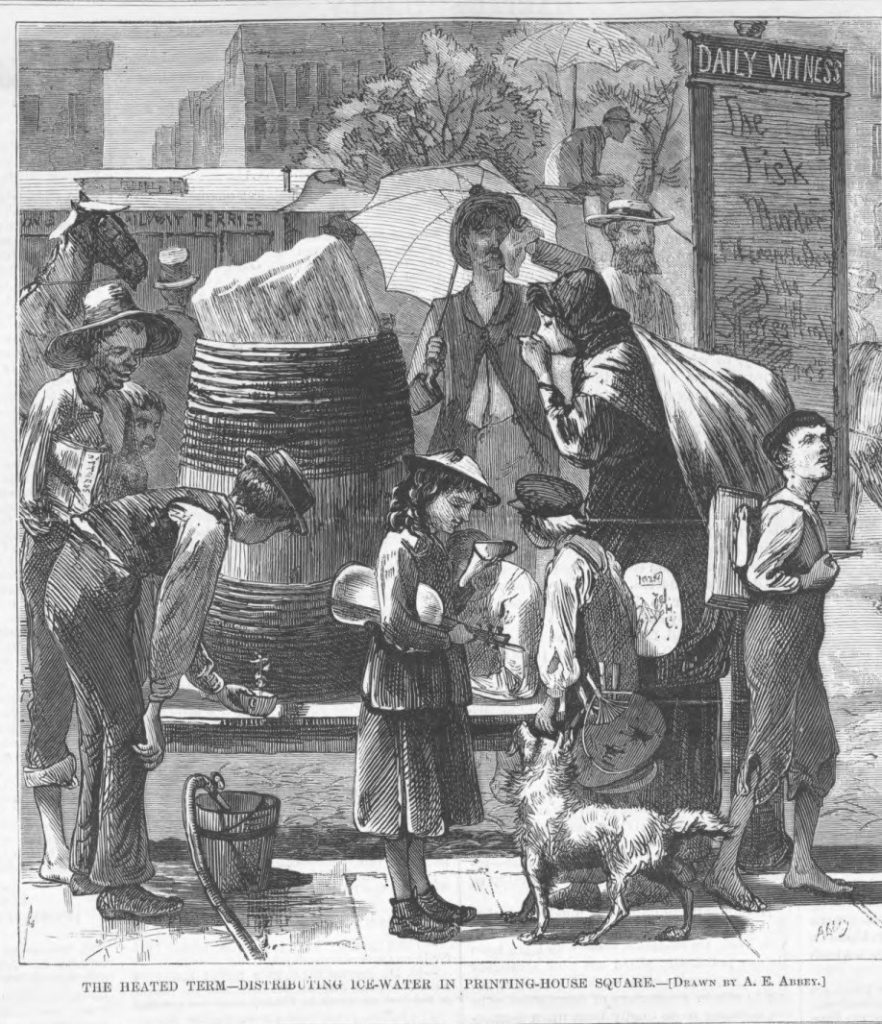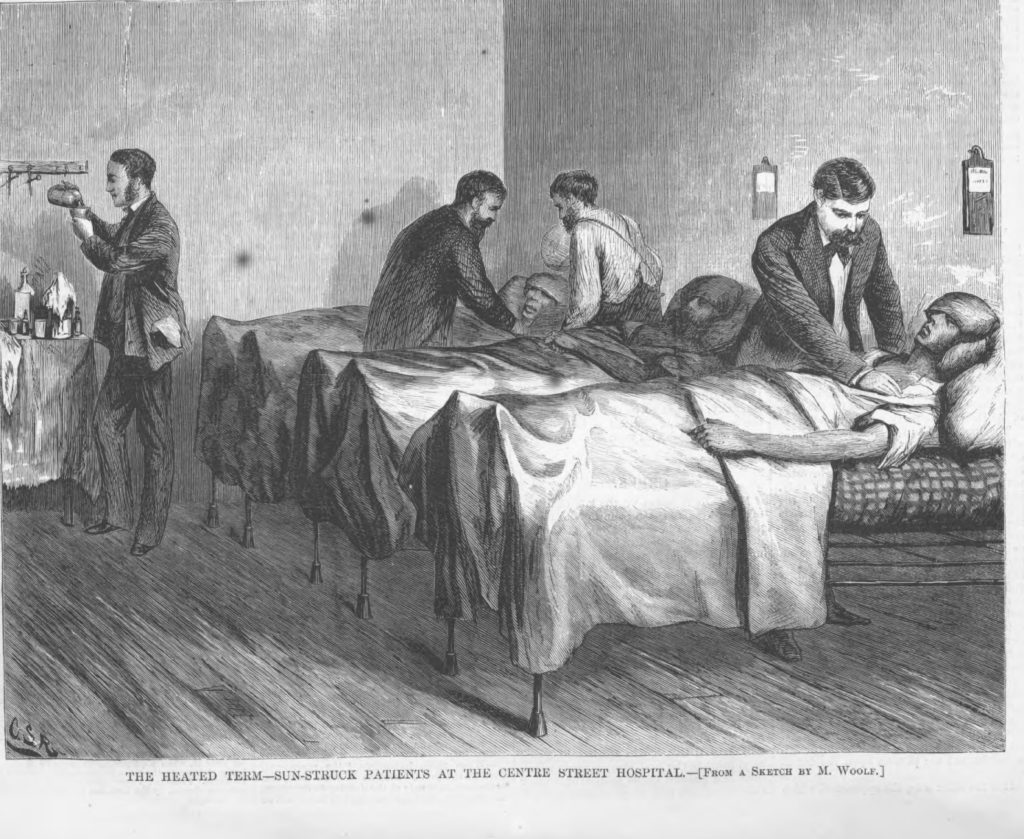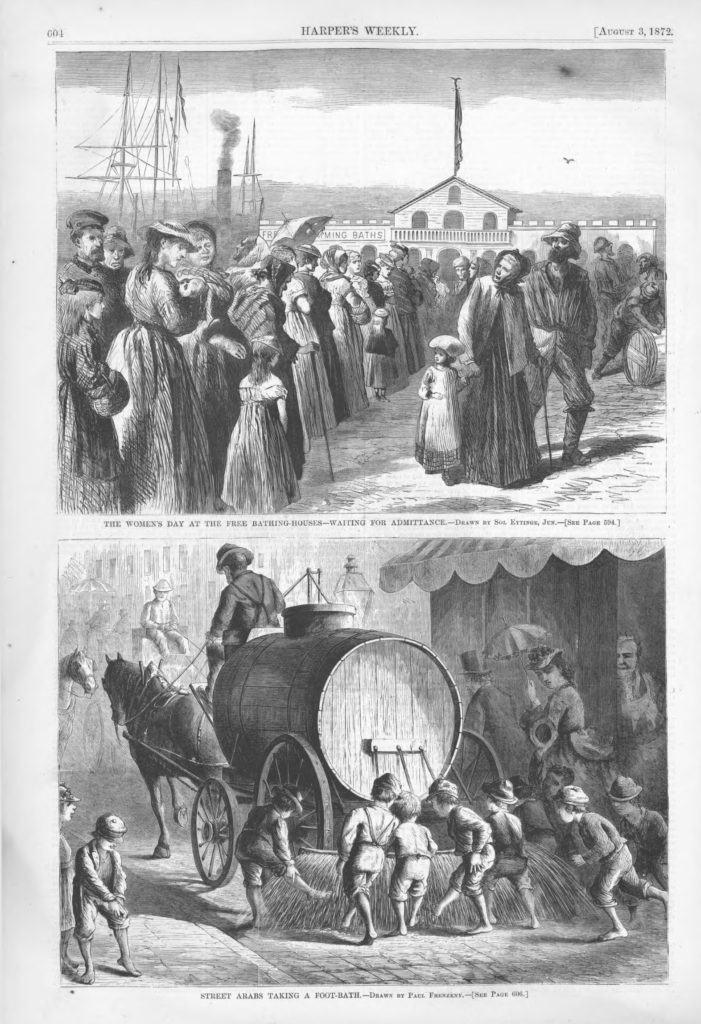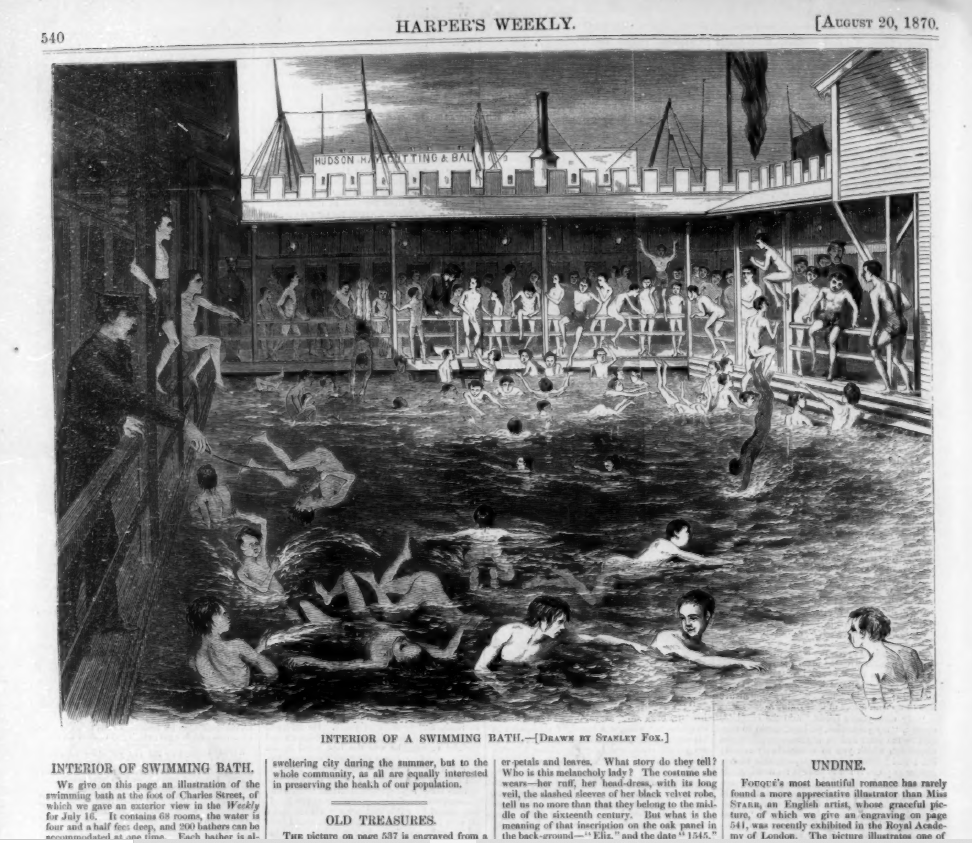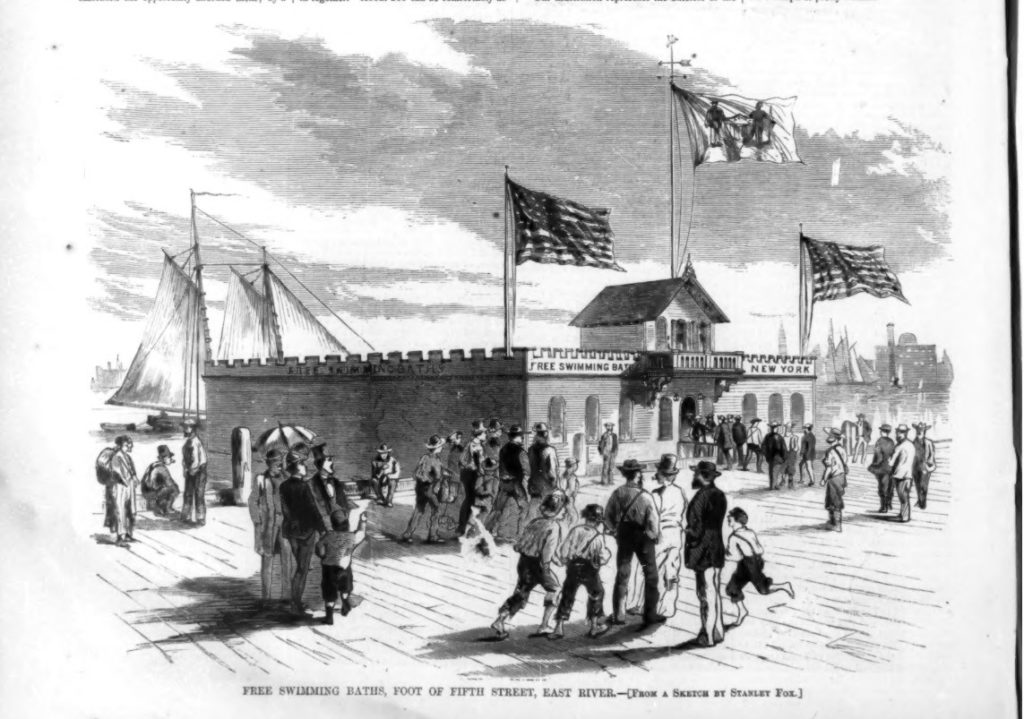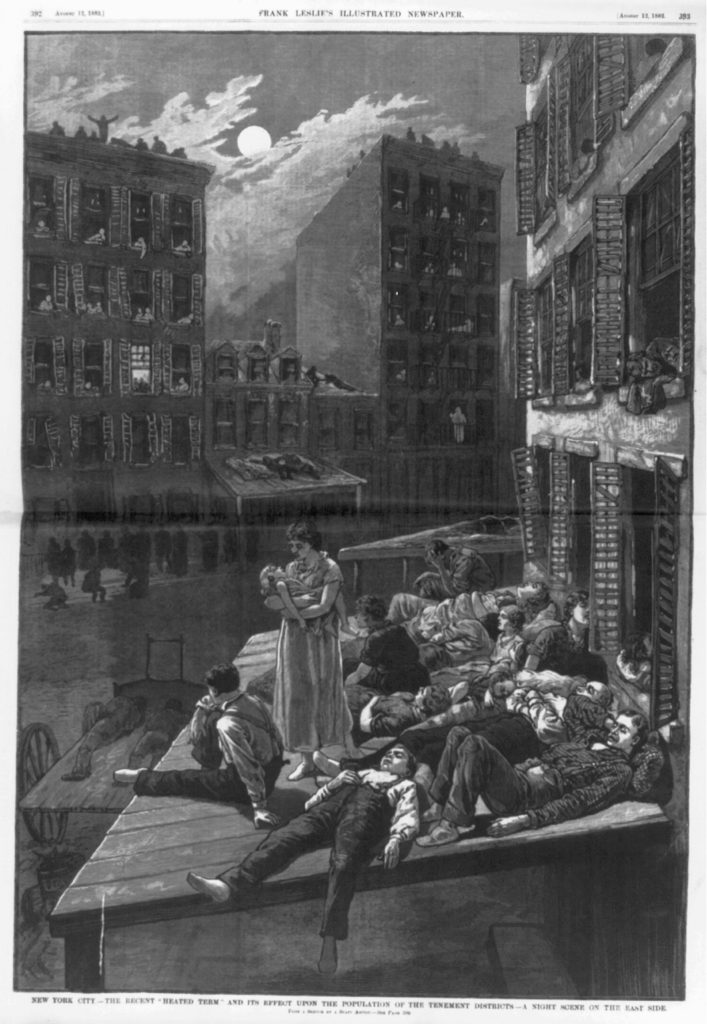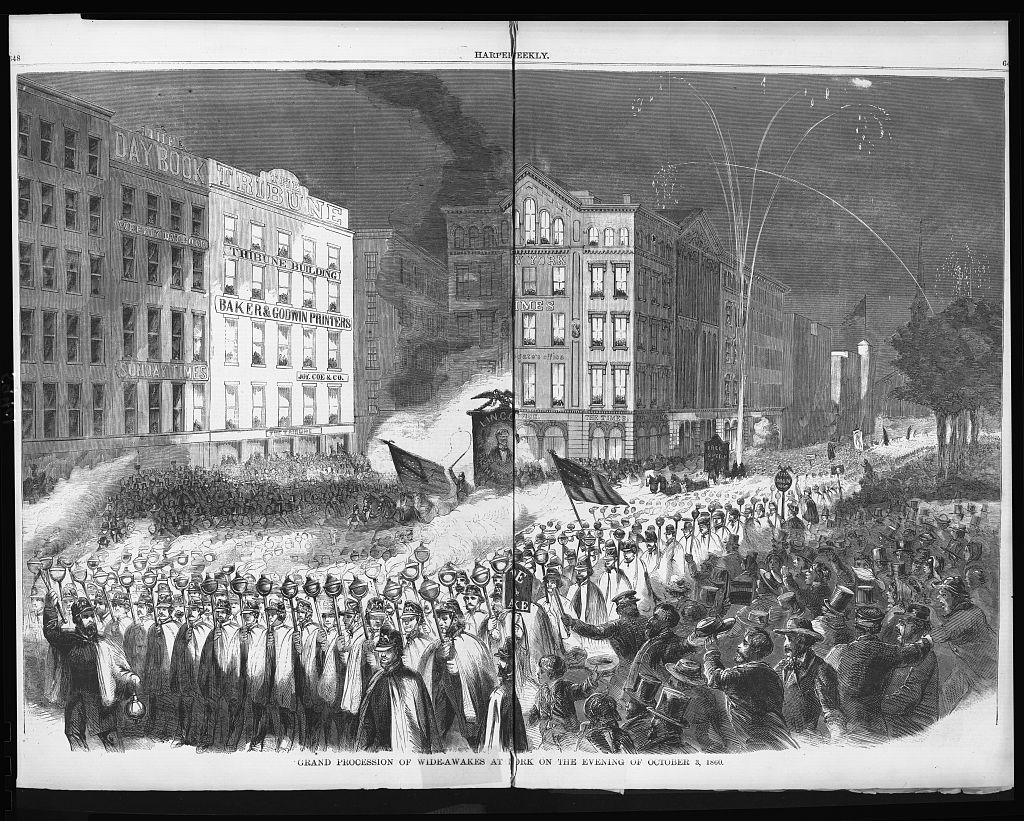150 years ago this summer New York City suffered some very hot weather. From the July 27, 1872 issue of Harper’s Weekly:
THE HEATED TERM.
THE heated term which ended on the 6th inst, was not only the most protracted, but also the most severe, ever experienced in this section of the country. At no time did the thermometer run much below ninety degrees in the shade, and in the hotter portions of the day a hundred degrees was the mark in the least exposed places. Everybody who could afford it fled from the large cities, and sought relief among the mountains or by the sea-shore. But the masses were compelled to remain at home and endure the terrible affliction. Of course the death roll showed a large increase over former weeks, and was much larger than that of any corresponding week for many years. In this city alone nearly 1600 deaths occurred during seven days, of which number 983, or about 63 per cent., were of children under five years of age. The little ones were chiefly the children of the poor, who were crowded into the smallest rooms of our filthy tenement-houses, where a breath of pure air is never drawn by the miserable occupants. No wonder they died: the only thing to be wondered at is that they lived so long. But the mortality was not confined to the children. Strong men dropped in the streets while going about their work, and many, a poor fellow who had never known what a day of sickness was succumbed to the burning rays of the sun, and was carried home dead.
At such a time of peril it was fortunate indeed that hospitals were provided for the reception of the stricken ones. The ambulances were kept busy all the day long running hither and thither to bear the sufferers to a place of relief. Among the most useful of these establishments is the Centre Street Hospital, near Chambers Street. It is very convenient for the use of down-town patients, who, if they were compelled to wait for treatment until they could reach Bellevue, would surely die on the way. Our artist on this page gives a sketch of one of the wards of the hospital referred to, showing the preliminary treatment of sun-stroke cases. Bags of ice are placed on the heads and under the arms of the victims, after which the entire bodies are rubbed down with broken ice. When this has been done the patients are removed to another ward, where they are subjected to further treatment. During the hot spell House-Surgeon VANDEWATER and Warden BROWN, with their assistants, were kept very busy, as many as twenty-two cases demanding their attention in a single day. To the credit of the doctors it should be said that eight out of every twelve cases were saved.
There is one feature of the sun-stroke that deserves to be kept well in mind — viz., that many of the cases are of men and women addicted to the excessive use of alcoholic liquors, and that the recovery of such is almost hopeless. To keep persons out of the dram-shops, particularly on very hot days, is therefore a good work. But how shall this be done? Men’s lips are parched with thirst – their throats burned dry: they must have drink. A humane individual has undertaken the practical solution of this question by placing barrels of ice-water in the streets of New York and Brooklyn for the free use of those who pass by. The upper sketch on this page shows the thirsty crowd refreshing itself from one of the barrels on Printing-house Square, opposite the City Hall. Metal drinking-cups are attached to the barrel, and thousands daily avail themselves of the grateful favor. Many of these are mechanics and artisans, or girls and boys employed in the factories, none of whom could afford to pay for a glass of soda-water or other cooling drink. The work of supplying cold water to the masses, free of charge, is worthy of imitation every where.
In its next issue Harper’s Weekly featured a couple more pictures related to the oppressive weather.
WAITING TO BATHE.
THE upper sketch on page 604, representing a crowd of poor women waiting on a sultry day for admittance to one of the free bathing-houses established by the city last year, was drawn by Mr. SOL EYTINGE from an actual scene. These free bathing-houses are entirely inadequate to the necessities of the poor of the city during such a summer as this. Their number should be increased tenfold, in order that every man, woman, and child in the city could enjoy the healthful refreshment of a daily bath. Such facilities would undoubtedly decrease the average death rate of the “heated term,” and contribute greatly to the comfort of the thousands of poor people who can not leave the city, and to whom a sail even to the nearest bathing beach involves an expense beyond their means. With the present limited facilities alternate days have to be assigned to men and women at these establishments; and sometimes the crowd is so great, especially on the days assigned to women, that many of the poor creatures stand for hours in the heat awaiting their turn. We trust that before another hot season arrives the city will be so well supplied with free bathing-houses that no one who desires to take advantage of this means of cleanliness and health shall be debarred by lack of opportunity.
STREET ARABS TAKING A FOOT BATH.
A FEW days since Mr. PAUL FRENZENY, whose spirited illustrations often adorn the pages of the Weekly, witnessed the droll scene depicted in the lower sketch on page 604. In the rear of a large watering-cart, which lumbered slowly through the street, marched a squad of jolly urchins, their ragged trowsers turned up above the knee, bathing their naked legs in the mimic rain which spouted over the dusty cobble-stones. The thermometer stood among the nineties, but the boys seemed perfectly happy as they trudged along; and doubtless many of the amused lookers-on from the sidewalk would have been glad to take a foot-bath with them.
You can read about New York City’s Public Bathhouses at Curbed New York and The Bowery Boys, which indicates the city began experimenting with public bath houses at least as early as 1870. The article included an image from the August 20, 1870 issue of Harper’s Weekly.. It’s the interior of a building the paper pictured in it’s July 16th, 1870 edition.

